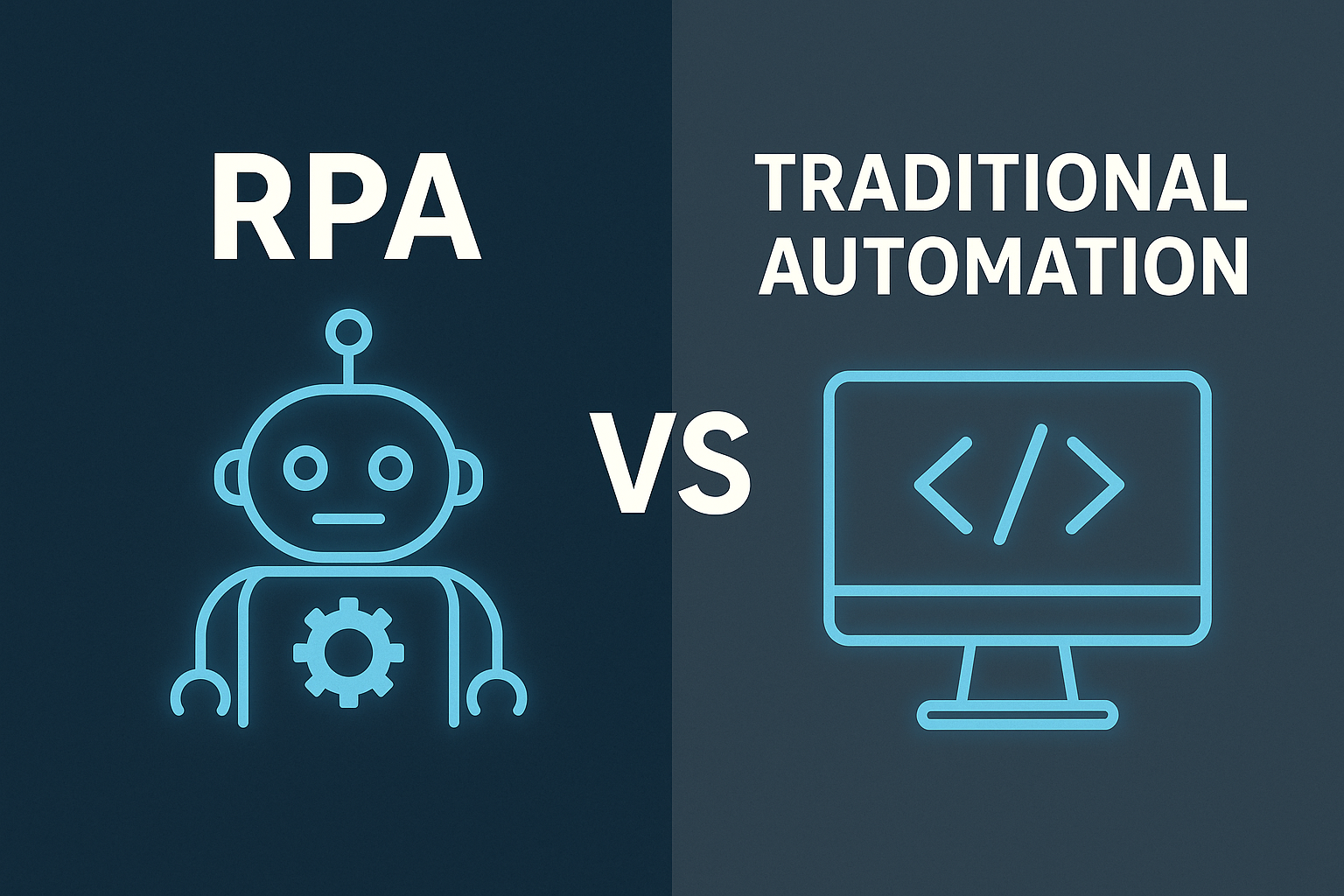Automation is evolving. While traditional automation methods have been around for decades, Robotic Process Automation (RPA) is changing the game. But which one is right for your business?
Traditional Automation This involves coding scripts, APIs, and system integrations. It’s effective but usually rigid, requiring developers and IT teams to implement changes.
RPA: A New Approach RPA uses no-code/low-code bots to interact with existing applications via their user interface. This makes it flexible and faster to deploy, especially for non-technical teams.
Key Differences
- Speed: RPA can be deployed in days; traditional automation may take months.
- Flexibility: RPA adapts to changing workflows easily.
- Cost: RPA tools are often cheaper and easier to maintain.
Use Cases
- Traditional: Complex backend integrations, data warehouse syncing.
- RPA: Invoice processing, onboarding sequences, customer queries.
When to Use What? Use traditional automation when your systems have robust APIs and long-term stability. Use RPA when you need speed, flexibility, or must work with legacy systems.
Conclusion Often, the best solution is a hybrid. Let Azality help you map the best automation approach for your goals.


Leave a Reply